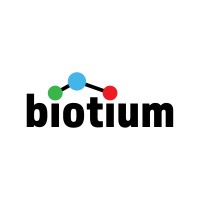GnRHR Monoclonal / CF488A / GNRHR/768
Product Details
| Description | GnRH Receptor Monoclonal Mouse Antibody (GNRHR/768) | |
|---|---|---|
| Conjugate | CF488A | |
| Clone | GNRHR/768 | |
| Target Species | Human | |
| Applications | FC, IF, IHC-P | |
| Supplier | Biotium | |
| Catalog # | Sign in to view product details, citations, and spectra | |
| Size | ||
| Price | ||
| Antigen | ||
| Host | ||
| Isotype |
About GnRHR
This gene encodes the receptor for type 1 gonadotropin-releasing hormone. This receptor is a member of the seven-transmembrane, G-protein coupled receptor (GPCR) family. It is expressed on the surface of pituitary gonadotrope cells as well as lymphocytes, breast, ovary, and prostate. Following binding of gonadotropin-releasing hormone, the receptor associates with G-proteins that activate a phosphatidylinositol-calcium second messenger system. Activation of the receptor ultimately causes the release of gonadotropic luteinizing hormone (LH) and follicle stimulating hormone (FSH). Defects in this gene are a cause of hypogonadotropic hypogonadism (HH). Alternative splicing results in multiple transcript variants encoding different isoforms. More than 18 transcription initiation sites in the 5' region and multiple polyA signals in the 3' region have been identified for this gene. [provided by RefSeq, Jul 2008]
This gene encodes the receptor for type 1 gonadotropin-releasing hormone. This receptor is a member of the seven-transmembrane, G-protein coupled receptor (GPCR) family. It is expressed on the surface of pituitary gonadotrope cells as well as lymphocytes, breast, ovary, and prostate. Following binding of gonadotropin-releasing hormone, the receptor associates with G-proteins that activate a phosphatidylinositol-calcium second messenger system. Activation of the receptor ultimately causes the release of gonadotropic luteinizing hormone (LH) and follicle stimulating hormone (FSH). Defects in this gene are a cause of hypogonadotropic hypogonadism (HH). Alternative splicing results in multiple transcript variants encoding different isoforms. More than 18 transcription initiation sites in the 5' region and multiple polyA signals in the 3' region have been identified for this gene. [provided by RefSeq, Jul 2008]
About CF488A
CF®488A from Biotium is a fluorophore with an excitation peak at 490 nm and an emission peak at 515 nm. It is spectrally similar to Fluorescein, Alexa Fluor™ 488 and DyLight™ 488. It can be use in fluorescence microscopy and flow cytometry. In microscopy, CF®488A has been specifically validated for STORM, STED, Structured Illumination (SIM), 2-Photon microscopy and TIRF.
CF®488A from Biotium is a fluorophore with an excitation peak at 490 nm and an emission peak at 515 nm. It is spectrally similar to Fluorescein, Alexa Fluor™ 488 and DyLight™ 488. It can be use in fluorescence microscopy and flow cytometry. In microscopy, CF®488A has been specifically validated for STORM, STED, Structured Illumination (SIM), 2-Photon microscopy and TIRF.
Experiment Design Tools
Panel Builders
Looking to design a Microscopy or Flow Cytometry experiment?
Validation References
Reviews & Ratings
| Reviews |
|---|
Looking for more options?
338 GnRHR antibodies from over 16 suppliers available with over 44 conjugates.





